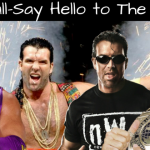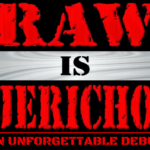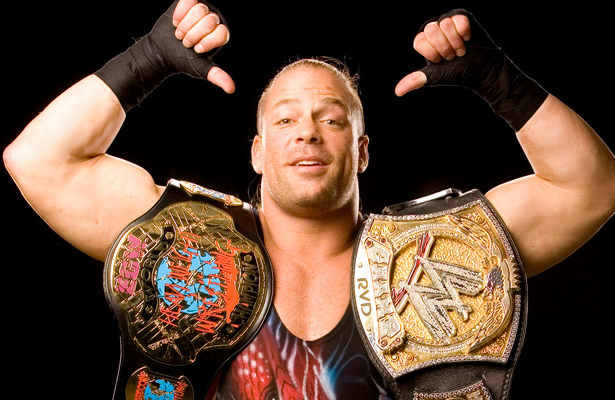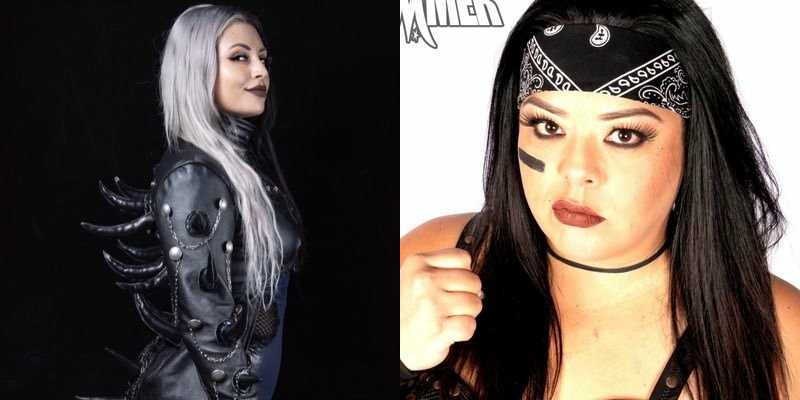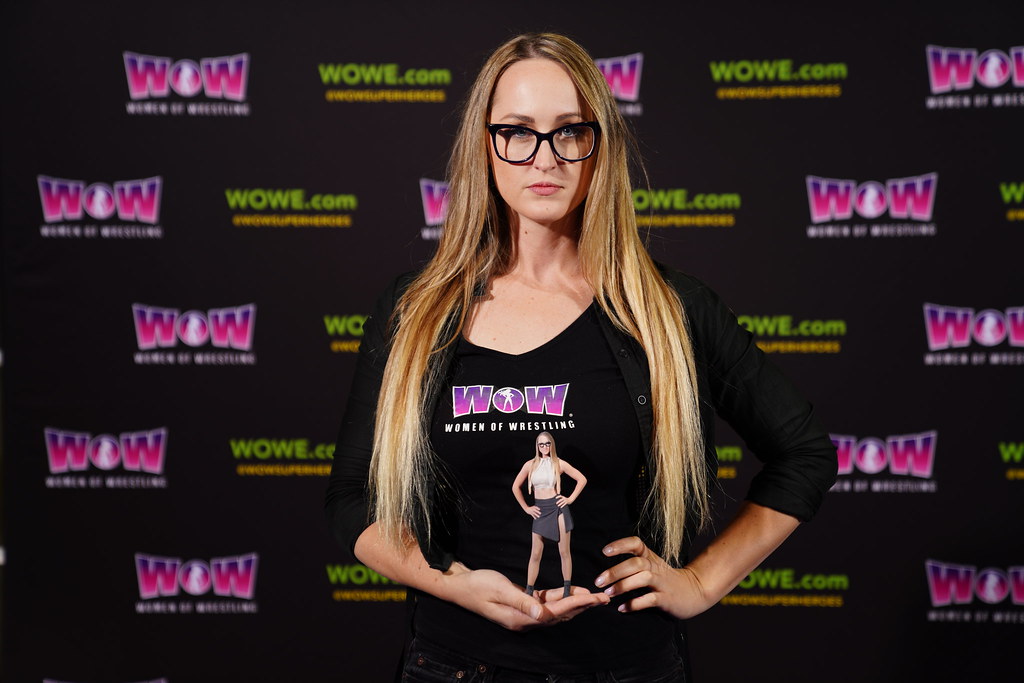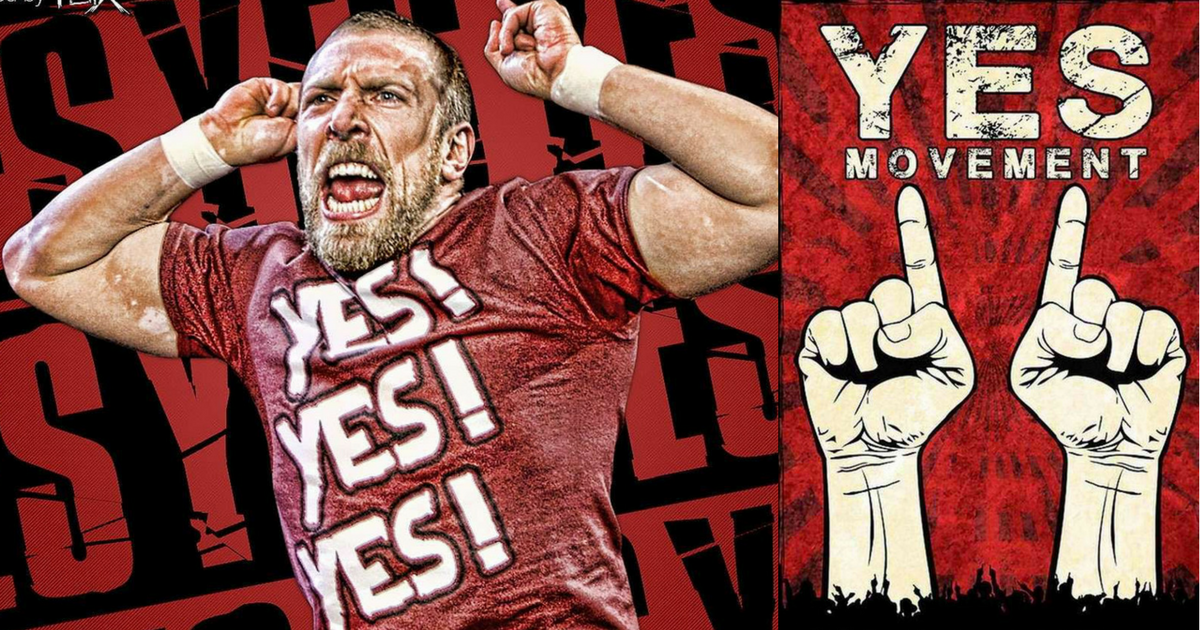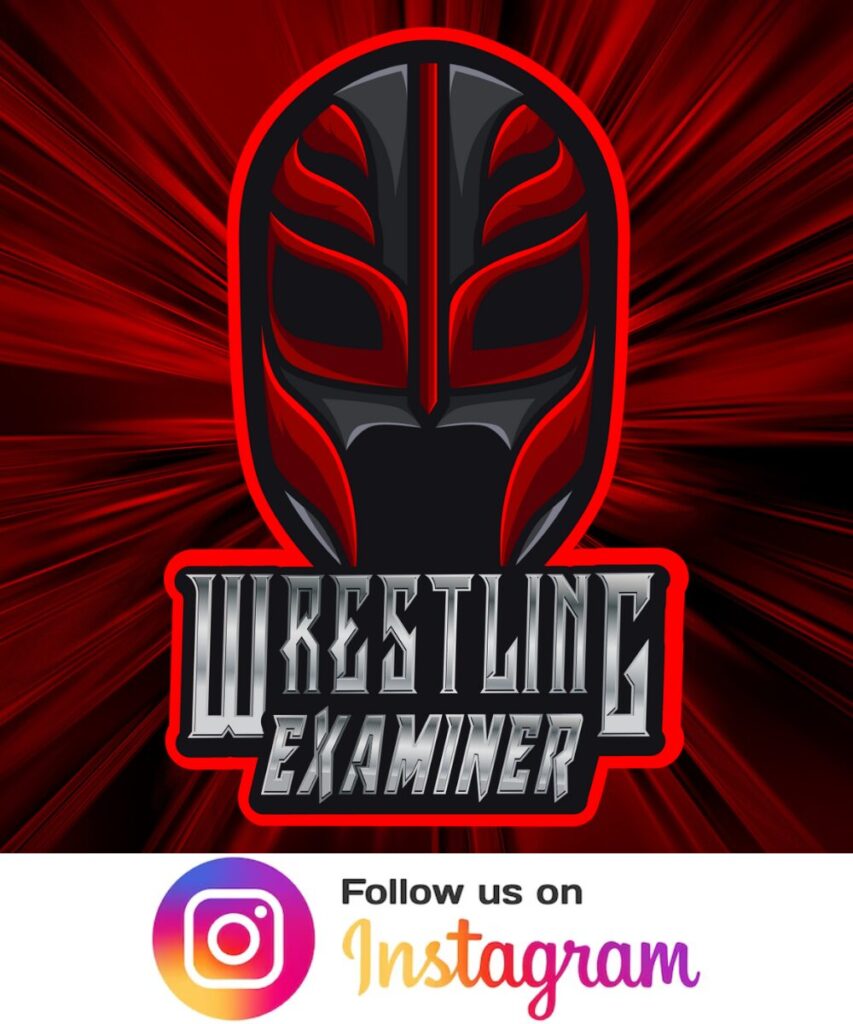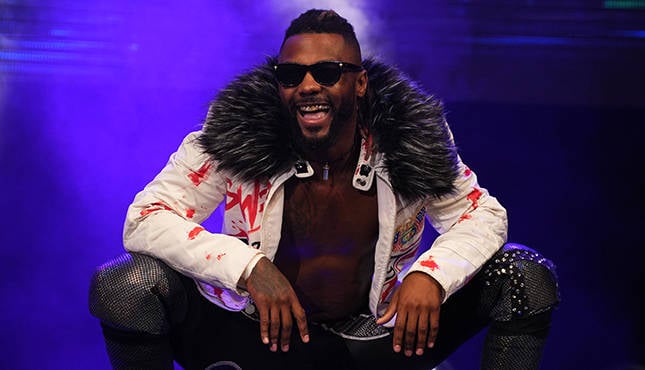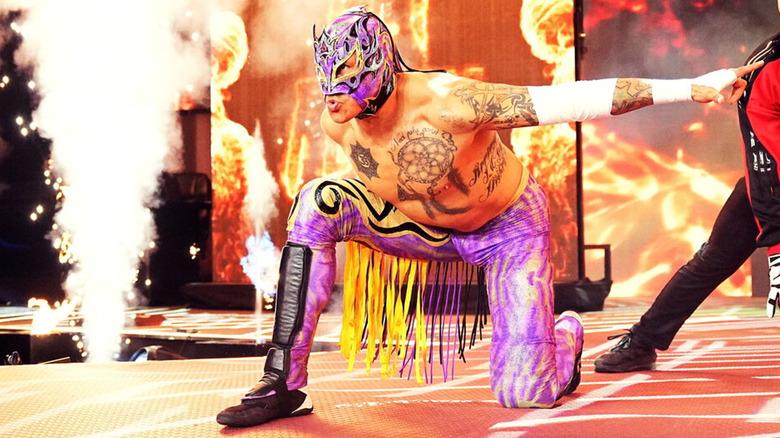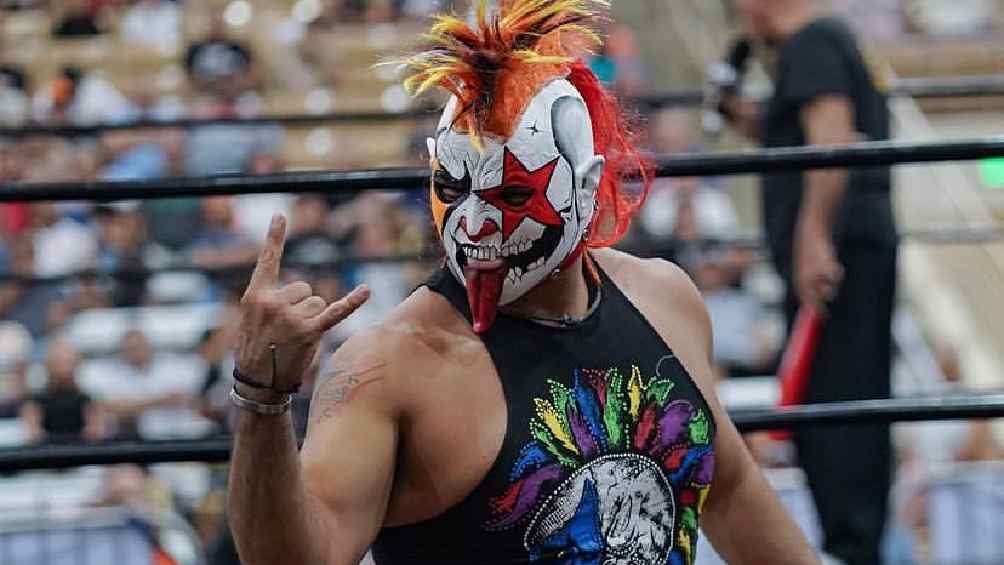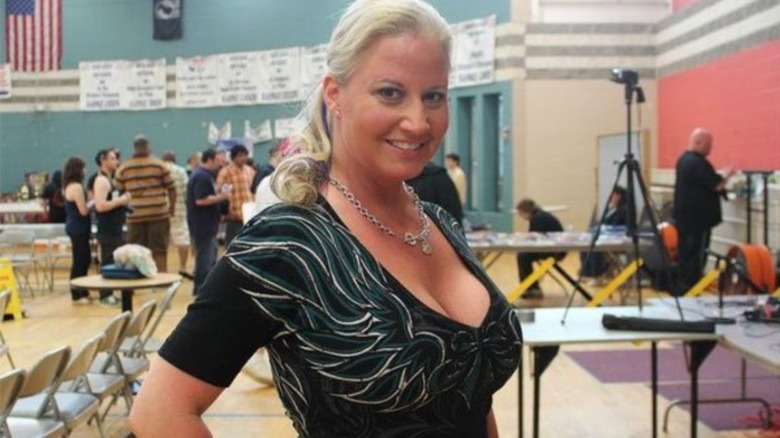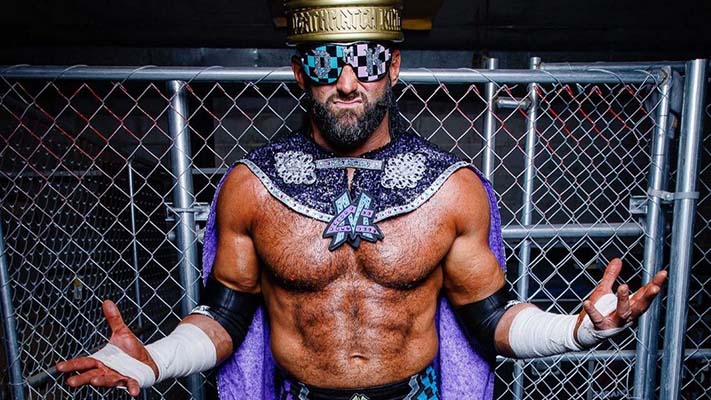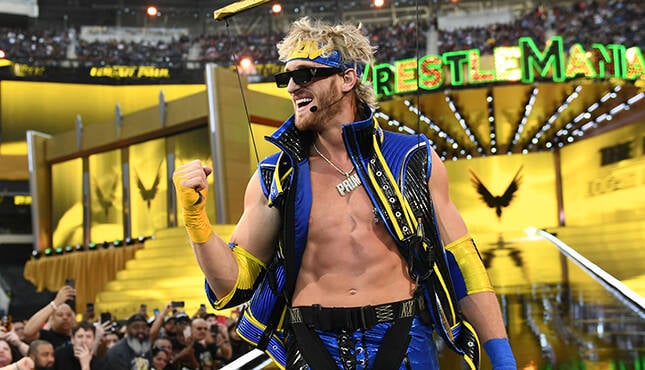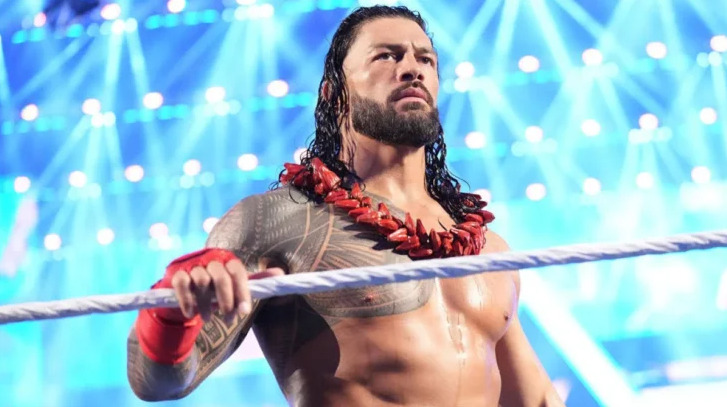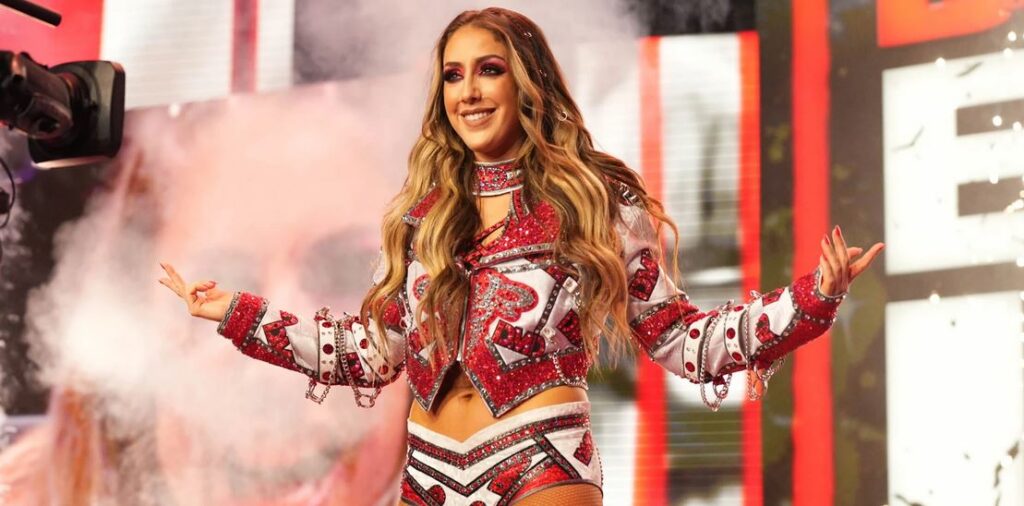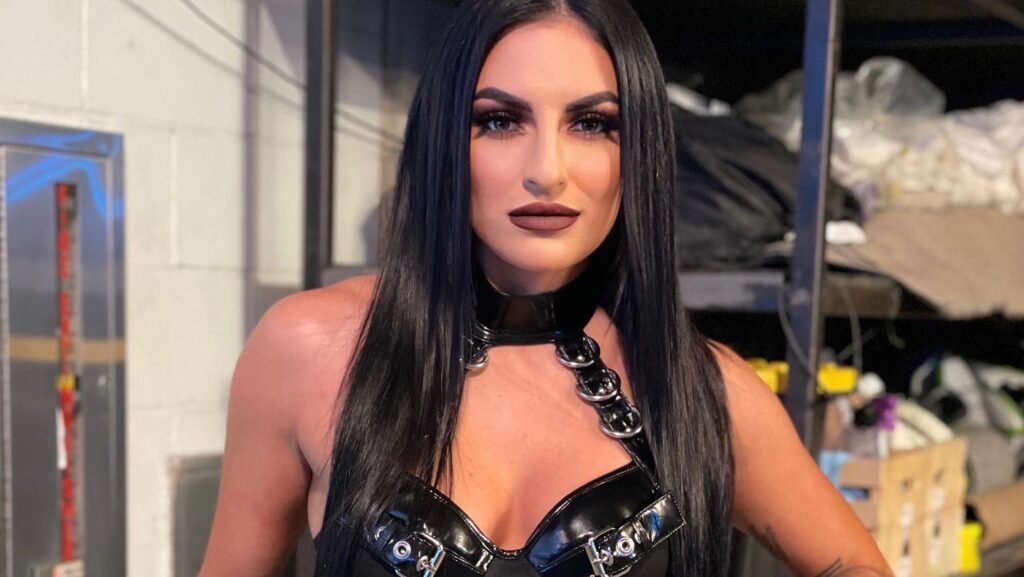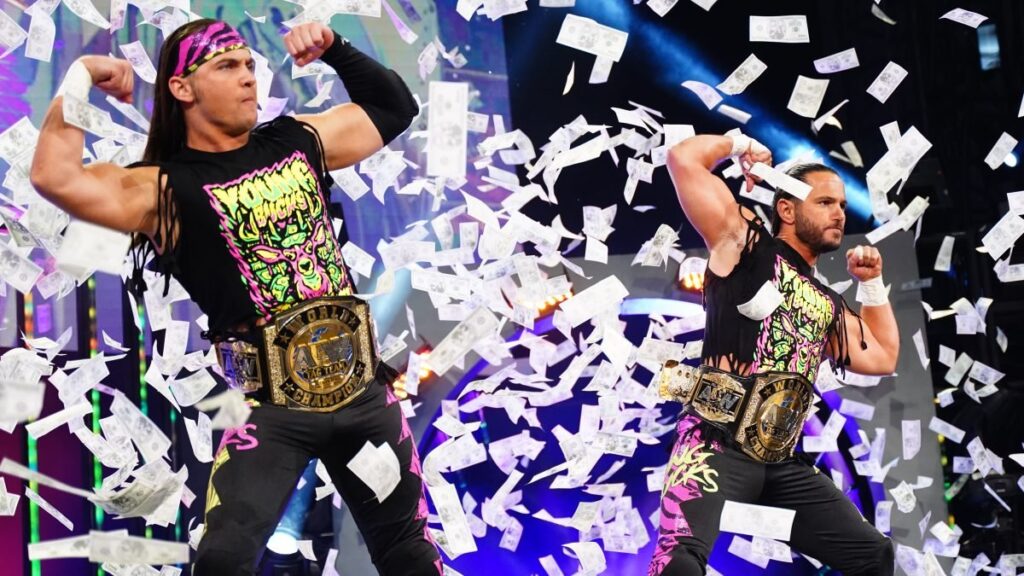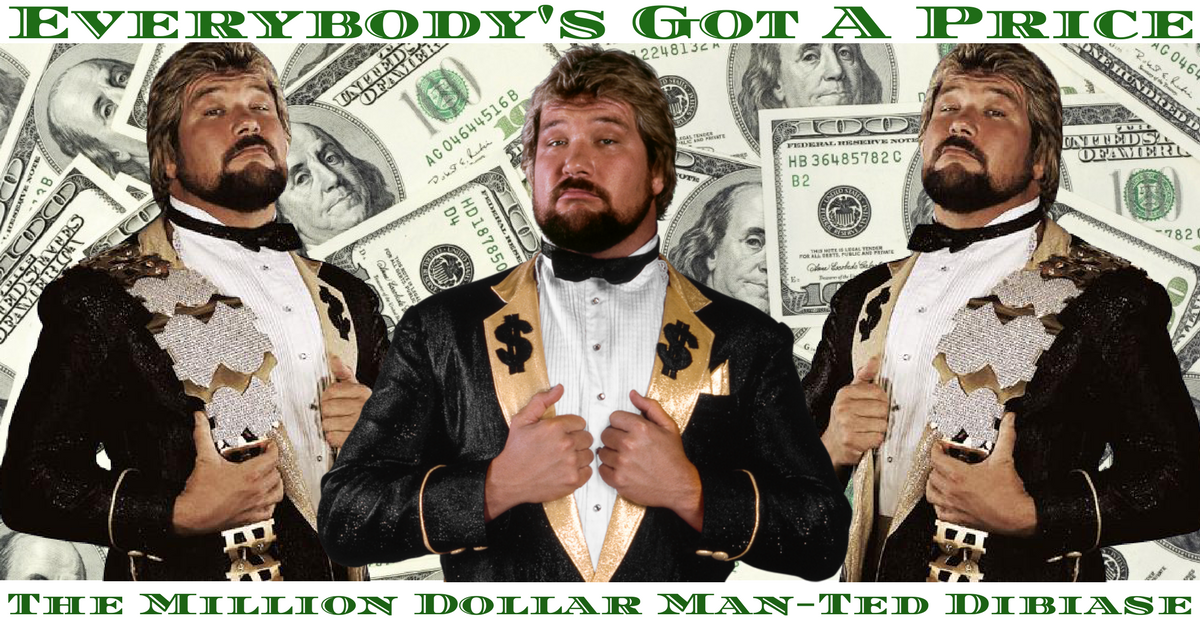 The Bible says, “The love of money is the root of all evil.” If that’s really the case, then it makes total sense that one of the most iconic heels in professional wrestling history came in the form of “The Million Dollar Man” Ted DiBiase. DiBiase is a former WWF Tag Team Champion, King Of The Ring tournament winner, and is a member of the 2010 WWE Hall of Fame class. However, his greatness can’t be measured solely by his career accolades, or lack there of. Despite never officially being recognized as the WWF Champion, DiBiase played a big role in some pretty historic moments throughout his career. Everything from debuting with revolutionary vignettes, to main eventing WrestleMania IV, and even managing some of the best talent in WWF history. DiBiase was the total package. “The Million Dollar Man” may very well be one of the greatest wrestling gimmicks ever, but it was the man behind the millions who brought the character to life, and truly made it memorable.
The Bible says, “The love of money is the root of all evil.” If that’s really the case, then it makes total sense that one of the most iconic heels in professional wrestling history came in the form of “The Million Dollar Man” Ted DiBiase. DiBiase is a former WWF Tag Team Champion, King Of The Ring tournament winner, and is a member of the 2010 WWE Hall of Fame class. However, his greatness can’t be measured solely by his career accolades, or lack there of. Despite never officially being recognized as the WWF Champion, DiBiase played a big role in some pretty historic moments throughout his career. Everything from debuting with revolutionary vignettes, to main eventing WrestleMania IV, and even managing some of the best talent in WWF history. DiBiase was the total package. “The Million Dollar Man” may very well be one of the greatest wrestling gimmicks ever, but it was the man behind the millions who brought the character to life, and truly made it memorable.
Ted DiBiase was a natural born athlete. He attended West Texas University on a football scholarship, but his career was cut short by injury. Despite the setback, DiBiase found his true calling in the sport of professional wrestling. He was trained by the legendary Terry and Dory Funk Jr., and debuted in June of 1974 as a referee in the Amarillo, Texas territory owned by the Funks. In 1975, DiBiase moved to the NWA‘s Mid South territory, where he’d primarily wrestle until 1979. Next, he tried his hand up North, with a short, but productive run for Vince McMahon Sr., and the World Wrestling Federation. During his stint, he was Hulk Hogan‘s very first Madison Square Garden opponent, and even briefly held the short lived North American Championship. DiBiase lost the championship to Pat Paterson, who would go on to merge it with the “mythical” South American Championship, to create the WWF Intercontinental Championship. In 1980, DiBiase returned to the NWA/Mid South, and for the next seven years he got the chance to work all across the globe with legends like Dick Murdoch, Jim Duggan, and Ric Flair. At the time, many industry insiders believed that DiBiase was being groomed for the NWA World Heavyweight Championship. Unfortunately, none of that ever came to fruition. Soon, DiBiase would be headed back up to New York, for a longer, and more iconic run.
In 1987, the WWF was riding high off the mainstream success of WrestleMania, and the popularity of their flagship star, Hulk Hogan. In order to keep building momentum, Vince McMahon needed talented in ring performers to come in, and challenge, his conquering hero. As luck would have it, DiBiase just so happened to be negotiating a new deal with the NWA/Mid South at the time, when McMahon swooped in, and secured a meeting with him. McMahon told DiBiase he had been developing a new character, and that he would be perfect for it. However, that’s all McMahon was willing to divulge until DiBiase signed on the dotted line. There’s been rumors out there for years that had DiBiase chosen to pass on the WWF‘s offer, there was a strong possibility that Ric Flair would’ve made the jump, and that perhaps he would’ve been gifted with the “Million Dollar Man” gimmick. The wrestling world would’ve looked a lot different had that happened, but it just wasn’t meant to be. Wisely, DiBiase opted to sign with McMahon, and “The Million Dollar Man” was officially born.
When DiBiase was introduced to the WWF audience, it was in a way fans weren’t very accustomed to. He had started working house shows, but had been kept off t.v. purposely. When he finally got on air, it wasn’t in a match, an interview, or even a backstage promo. Instead, DiBiase got to reinvent the way WWF debuted it’s performers by using vignettes. For those unfamiliar with the term, a vignette is basically a commercial, or advertisement, announcing the impending arrival of a new wrestler. The first “Million Dollar Man” vignette aired on June 27, 1987, on WWF Superstars. By the time they all aired, fans had been introduced to DiBiase’s man servant, Virgil, witnessed the creation of the Million Dollar Championship, and had a pretty good sense of what kind of heel he was. Not surprisingly, it wouldn’t be long before DiBiase had his sights set on the richest prize in professional wrestling, the WWF Championship.
In late 1987, DiBiase entered a feud with the WWF‘s top dog, Hulk Hogan. He attempted to buy the WWF Championship from Hogan, but much to his chagrin, “The Hulkster” refused to sell. This led to series of title matches between the two, where Hogan came out on top, leading DiBiase to change his game plan. Instead of beating Hogan, DiBiase would simply pay someone to do it for him. He purchased the contract of Andre The Giant, from Bobby “The Brain” Heenan, and soon deployed his new weapon to fetch his championship. On February 5, 1988, the most watched wrestling program in American television history took place, The Main Event. The show was built around the WrestleMania III rematch between the WWF Champion, Hulk Hogan, and Andre The Giant. This time though, DiBiase would have a hand in the outcome. During the match’s closing moments Andre pinned Hogan for what looked like a 1 count. However, the referee counted to 3, awarding the match, and the WWF Championship, to Andre The Giant. Andre then relinquished the WWF Championship, and handed it to DiBiase. After the match, it was to be revealed that Dave Hebner, who was supposed to be the referee, had been replaced by an identical impostor, hired by DiBiase. In reality it was Dave Hebner‘s twin brother, Earl, but at the time, it was an absolutely ground breaking angle. At the end of the night, “The Million Dollar Man” walked out with the prestigious WWF Championship in his possession. DiBiase showed up to ensuing house shows with the WWF Championship, and was billed as Champion. He even went as far as defending the title against Bam Bam Bigelow, before eventually being stripped by WWF President Jack Tunny. That set up the most unique WrestleMania of all time, and thrust “The Million Dollar Man” right into the spotlight.
WrestleMania IV is an anomaly in the WrestleMania series. Unlike every other WrestleMania, which usually serves as a grand stage to showcase, and culminate, multiple storylines, WrestleMania IV focused predominantly on the 16 man tournament to crown a new WWF Champion. That night, DiBiase defeated “Hacksaw” Jim Duggan, and Don Muracco, in the first two rounds, before receiving a bye into the tournament finals. In the Finals, he squared off against “Macho Man” Randy Savage. DiBiase, and Savage, had the best WrestleMania main event up to that point. Both men were on top of their game, but in the end, it was Savage who won, and got his WrestleMania moment. Rumor has it, the original plan was for DiBiase to win the WWF Championship, and for “Macho Man” to get another run with the Intercontinental Championship. However, when The Honky Tonk Man refused to drop the Intercontinental Championship to Savage, which sent Vince McMahon back to the drawing board. A new plan was formed, and it was decided that Savage would be crowned the new WWF Champion instead. If the rumor is true, it’s a tough break for “The Million Dollar Man.” WrestleMania IV would be as close as he would ever get to being the WWF Champion, but oddly enough, it wouldn’t be the last time he’d be part of a WrestleMania main event.
After WresteMania IV, DiBiase and Andre The Giant (The Mega Bucks) teamed up against Hulk Hogan and Randy Savage (The Mega Powers), in the first ever SummerSlam main event. Then, DiBiase was once again part of a tournament. This time it was the 1988 King Of The Ring. “The Million Dollar Man” defeated Brutus “The Barber” Beefcake, Ken Patera, and Ron Bass in the first 3 rounds, before once again facing off against Randy Savage in the finals. This time around, it was DiBiase who came out the winner, and was crowned King Of The Ring. It was a nice consolation prize, but it wasn’t the same as being crowned WWF Champion. Sadly, it would be a slow, and steady, decline from that point on for DiBiase. He’d move on to a feud with Hercules, before moving into a program with Brutus “The Barber” Beefcake, which culminated with a WrestleMania V match. It wasn’t a bad spot, but it was definitely a few steps down from main eventing WrestleMania the year before. Ted DiBiase couldn’t have been happy with that, but by the next WrestleMania, he’d be back in a hot storyline.
WrestleMania VI is mostly remembered for “The Ultimate Challenge.” The main event featured WWF Champion, Hulk Hogan facing off against WWF Intercontinental Champion, Ultimate Warrior, with both men’s championships on the line. It was one of the most highly anticipated matches of all time. However, it wasn’t the only “white hot” storyline the WWF had heading into ‘Mania that year. WrestleMania VI’s undercard saw “The Million Dollar Man” Ted DiBiase taking on Jake “The Snake” Roberts. The feud started shortly after WrestleMania V when DiBiase “injured” Roberts, forcing him out of action for months. When Roberts returned, he managed to steal DiBiase’s coveted Million Dollar Championship belt, placing it inside the same bag where he kept his snake, Damien. DiBiase responded by enlisting The Big Boss Man to get his belt back, but his plans fell apart when Boss Man turned babyface, and refused to help him any further. This set up the WrestleMania VI match between DiBiase and Roberts. Everything about this feud was great, right up until the end of the actual match, where DiBiase won by count-out. It just felt like an anticlimactic way to end such a long, and heated storyline. Especially after the classic backstage promo Jake Roberts cut right before the match. WrestleMania VI would be the last time DiBiase had a marquee singles match at WrestleMania, but his days as an impact player In the WWF were far from over.
The 1990 Survivor Series is unforgettable for one reason, the debut of The Undertaker. What’s often overlooked, is that Ted DiBiase was the one who introduced him to the WWF audience. DiBiase had been teasing a mystery partner all night for his traditional Survivor Series match. When it was finally time for the match, an ominous dark figure was lead down to the ring by DiBiase’s associate, Brother Love. The rest is wrestling history. Admittedly, if Undertaker wouldn’t have debuted with DiBiase at Survivor Series, he obviously would’ve debuted at some other point, and his career would’ve probably still played out the same. Regardless though, DiBiase still has the distinct honor of bringing the most dominant force in WWF history into the fold. After Survivor Series, DiBiase continued a feud with “The American Dream” Dusty Rhodes until the 1991 Royal Rumble. At the Rumble, Virgil turned babyface on DiBiase, and set up his last singles match at WrestleMania. DiBiase lost to Virgil by count-out at WrestleMania VII. He lost to him again at SummerSlam 1991. This time for the Million Dollar Championship. The next chapter of DiBiase’s career came as a tag team competitor. He, and his associate Irwin R. Schyster, formed one of the most iconic tag teams in WWF history, Money Inc.. The duo experienced huge success together, winning the WWF Tag Team Championships a total of 3 times, and even having a marquee WrestleMania IX match against Hulk Hogan, and Brutus “The Barber” Beefcake.
WrestleMania IX would be DiBiase’s last as a competitor. Later that year, at SummerSlam 1993, he’d have his final WWF match ever, against Razor Ramon. DiBiase would close out 1993 touring for All Japan Pro Wrestling. In Japan, he won the World Tag Team Championships with Steve Hansen, before ultimately retiring due to injury. DiBiase returned to the WWF for the 1994 Royal Rumble, as a commentator. From there, he embarked on the final stage of his legendary career. “The Million Dollar Man” would no longer try to conquer the WWF from inside the ring, instead he formed The Million Dollar Corporation, becoming the manager, and mouthpiece, for some of the WWF’s most notorious heels. At one point or another, DiBiase’s corporation consisted of Bam Bam Bigelow, Tatanka, Nikolai Volkoff, Kama, King Kong Bundy, IRS, the Fake Undertaker, Psycho Sid, and the 123 Kid. With his corporation, DiBiase was able to loom over the WWF‘s “New Generation,” keeping himself relevant in a way that very few 80’s heels had been able to do. He even found himself in the WrestleMania XI main event, managing Bam Bam Bigelow against Lawrence Taylor. Not a bad way to wind down your WWF career.
DiBiase had a great run with his corporation, but eventually the storyline ran its course. “The Million Dollar Man” needed a new direction, or at least a new heel to manage. In January of 1996, he got just that. Steve Austin had spent most of the early 90’s honing his craft in WCW as “Stunning” Steve Austin. He was one hell of a worker, but the higher ups in WCW, specifically Eric Bischoff, didn’t see a future star in him. Needless to say, they were wrong. After a short stint in ECW, Austin made his way to the WWF, and was paired with DiBiase. He would now be known as “The Ringmaster,” and would have DiBiase as a mouthpiece. DiBiase even anointed his new protege as the Million Dollar Champion. Sadly, Austin and DiBiase had a mediocre run together. At the end of the day, Austin didn’t need a mouthpiece. The era defining “Stone Cold” character was inside him just dying to come out, and all DiBiase did was delay that with his presence. Eventually, Austin and DiBiase would be split up, and DiBiase would jump ship to WCW.
In mid 1996, the wrestling business was going through a metamorphosis. The WWF was on the verge of embarking on the Attitude Era. While in WCW, the creation of the NWO had fan interest at an all time high. DiBiase saw his opportunity to be a part of something great, and took it. Unfortunately for DiBiase, his WCW run would be yet another example of him being overlooked, and undervalued. Initially, he debuted as the 4th member of the NWO. He was called “Trillionaire Ted,” and was said to be “financing” the rebellious group. The character, and his association with the NWO, made total sense. DiBiase was one of the most recognizable heels of the WWF‘s “Golden Era,” so him being the “manager,” or mouthpiece for the NWO was a stroke of genius. Like most great ideas in WCW though, DiBiase as the mouthpiece didn’t last long. Eric Bischoff realized just how valuable the role was, and eventually decided to cast himself in it. Once Bischoff was a a part of the NWO, DiBiase became obsolete. He would turn babyface, and briefly manage the Steiner Brothers before finishing off his WCW contract as a road agent. Had he stayed in the WWF, perhaps “The Million Dollar Man” character would’ve been properly retired. I can’t help but imagine a segment where every babyface he ever wronged came down to the ring and symbolically “bankrupted” DiBiase, sending him off in style. Sadly though, fairy-tale endings are few and far between in the wrestling business.
Despite his career ending on a whimper, DiBiase’s impact on the wrestling business can’t be overlooked. As simplistic as “The Million Dollar Man” character may seem now a days, an evil millionaire with ambitions of taking over the WWF was a game changing idea in the 80’s. Equipped with arguably the catchiest entrance theme ever, not to mention the best evil laugh in history, DiBiase was the true embodiment of a wrestling heel. His involvement in any angle always left the door open for the possibility of a swerve, because as he often loved to point out “Everybody’s got a price for The Million Dollar Man.” The fact that such a strong character never got an official run with the WWF Championship is a shame. A heel champion like DiBiase could’ve helped build strong babyface challengers, and done big business for the WWF. Much like Ric Flair did for the NWA. Sadly, that just wasn’t in the cards for DiBiase. In 2010, his career came full circle when he was inducted into the WWE Hall of Fame, finally taking his place among the sport’s legends. Today, Dibiase is a Christian Minister, and still makes sporadic appearances on WWE programming. Usually in a some sort of nostalgic backstage skit. “The Million Dollar Man” will always be one of the most beloved characters of the WWF‘s “Golden Era.” Villain, or not, he gave all he had to the wrestling business, and fans will always respect that. His legacy can honestly be summed up best in his own words, “Rich in ring prowess, flush with technical skill, and extremely well off when it comes to wrestling ability!!!” It’s fair to say that much like money, Hall of Famer’s like DiBiase don’t just grow on trees.


